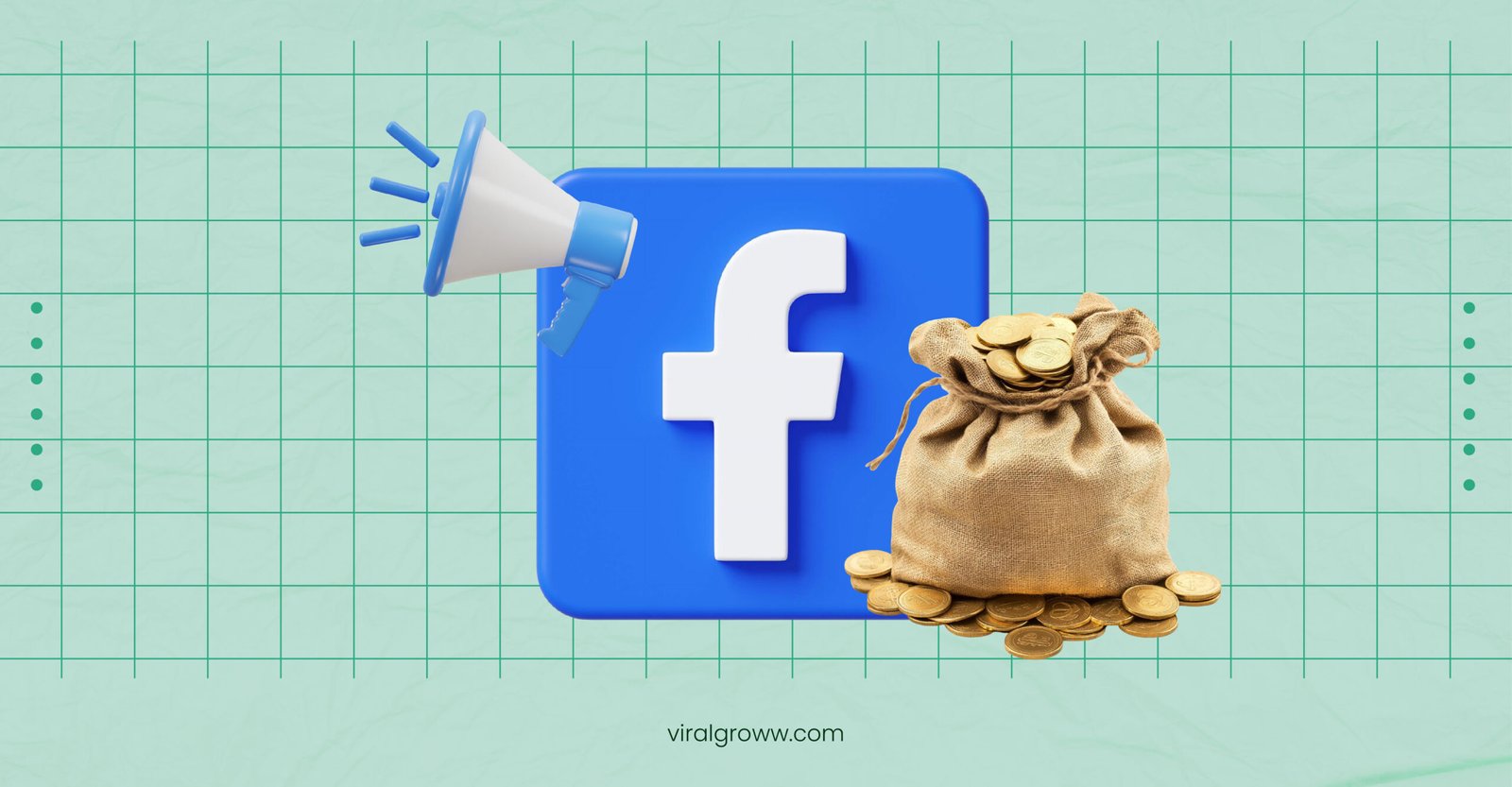Table of Contents
You’ve finally found a Facebook ad that’s crushing it. Sales are rolling in, ROAS looks solid, and you’re ready to crank up the budget. Then it happens: you increase spend and everything falls apart. Sound familiar?
Scaling Facebook ad budgets feels like defusing a bomb—one wrong move and your performance explodes. But it doesn’t have to be this nerve-wracking.
I’ve managed over $12 million in Facebook ad spend across dozens of accounts, and I’ve learned the hard truth: most advertisers scale their Facebook ad budget completely wrong. They pump money in too quickly, ignore the algorithm’s learning periods, and wonder why their once-profitable campaigns tank overnight.
What if I told you there’s a methodical approach that keeps performance stable while doubling or even tripling your spend? The secret lies in understanding how Facebook’s system actually works when you hit that budget increase button.
Understanding Facebook Ad Budget Fundamentals

Key metrics that signal readiness to scale
You know that feeling when your campaign is finally hitting its stride? That’s the sweet spot for scaling. But don’t just go with your gut – look for these concrete signals:
- ROAS (Return on Ad Spend) consistently above your target for at least 3-5 days
- CPAs (Cost Per Acquisition) holding steady below your maximum threshold
- Frequency staying below 2.0 to avoid audience fatigue
- Relevance scores of 7+ across your ads
- At least 50 conversions per ad set in the learning phase
When these numbers line up, you’ve got the green light to open your wallet a bit more.
Setting realistic scaling expectations
Scaling isn’t a magic button that doubles your results overnight. Sorry to burst your bubble.
Most successful scaling looks more like this: increase budget by 20%, wait 48-72 hours, assess performance, repeat if stable.
The Facebook algorithm needs time to adjust to budget changes. Push too hard too fast, and you’ll watch your carefully optimized campaign crumble before your eyes.
Remember this golden rule: the faster you scale, the higher the risk. A 5x budget increase might sound exciting, but your ROAS will likely tank while Facebook recalibrates.
Calculating your optimal starting budget
Your starting budget needs to give Facebook enough data to work with. Here’s a quick formula that won’t steer you wrong:
Minimum daily budget = (Target CPA × 5) ÷ Conversion rate
For example, if your target CPA is $20 and your landing page converts at 10%:
- Minimum daily budget = ($20 × 5) ÷ 0.1 = $1,000
Too steep? Start smaller but understand you’ll need patience while Facebook gathers enough data.
Identifying profitable campaigns worth scaling
Not all campaigns deserve your scaling dollars. Focus on these winners:
- High-volume converters with consistent performance over 7+ days
- Campaigns with headroom in audience size (check Audience Definition in Ads Manager)
- Ad sets with <70% budget spent daily (they can handle more budget)
- Creative variations performing similarly well (reduces risk if one ad fatigues)
Beware of scaling campaigns that:
- Just had a random good day
- Have tiny audience sizes
- Rely on a single high-performing ad
- Are still in learning phase
Remember: scaling amplifies everything—including problems. Only scale what’s truly working.
Proven Scaling Methods for Maximum ROI
A. The 20% incremental scaling technique
Scaling your Facebook ad budget too quickly can kill a winning campaign. That’s why the 20% rule exists – it’s the sweet spot that helps you grow without triggering Facebook’s algorithm to freak out.
Here’s how it works: increase your daily budget by no more than 20% every 48-72 hours. Simple math, big results.
Say you’re spending $100 daily on a profitable campaign. Instead of jumping to $200 (which would shock the system), bump it to $120 first. Wait a couple days, check performance, then move to $144, and so on.
This gradual approach gives Facebook’s algorithm time to adjust and find new winning placements without disrupting what’s already working. I’ve seen campaigns tank overnight from aggressive scaling – don’t make that mistake.
B. Horizontal scaling by duplicating successful ad sets
When an ad set is crushing it, your first instinct might be to pump more money into it. But sometimes, that’s like asking your star player to play every position.
Horizontal scaling lets you create carbon copies of winning ad sets instead. Take what’s working, duplicate it 3-5 times with identical targeting and creative, but set each one with the original budget.
The magic happens because each duplicate gets fresh optimization opportunities. Facebook treats them as new ad sets, often finding pockets of your audience that weren’t being maximized before.
I typically change just one small variable between duplicates – maybe the campaign name or a slight bid adjustment. This approach spreads your risk while expanding reach.
C. Vertical scaling by increasing existing ad set budgets
Vertical scaling is the straightforward approach – you simply pour more fuel on the fire that’s already burning hot.
When an ad set consistently delivers strong ROAS for at least 3-5 days, it’s earned the right to a bigger budget. Unlike the cautious 20% method, vertical scaling can sometimes handle more aggressive increases – I’ve successfully doubled budgets on particularly strong performers.
The key is watching the first 24-48 hours after scaling like a hawk. Look for:
- Cost per acquisition staying within 20% of previous performance
- Frequency not climbing too rapidly
- CPM remaining stable
If metrics deteriorate, don’t be stubborn. Scale back to the previous budget where performance was solid and try a more gradual approach.
D. Leveraging Campaign Budget Optimization (CBO)
CBO is Facebook’s way of saying “let me handle the money.” Instead of setting budgets at the ad set level, you set one budget at the campaign level and let Facebook distribute it among your ad sets based on performance.
The brilliance of CBO for scaling is it automatically shifts budget toward winners throughout the day. No more manual adjustments or checking stats hourly.
Start with at least 3-5 ad sets in your CBO campaign with different targeting approaches. Set a minimum spend limit (usually 10-20% of total budget) on newer ad sets you want to give a fair chance.
CBO really shines when scaling because it adapts faster than you can. I’ve seen it pick up on performance shifts within hours and reallocate accordingly.
E. When to use daily vs. lifetime budgets
Daily budgets give you consistent spending each day – perfect for testing and maintaining stable performance metrics. They’re my go-to when scaling methodically using the 20% rule.
Lifetime budgets, on the other hand, allow Facebook to spend your budget unevenly across your campaign duration. This works beautifully when:
- Your audience has predictable high-engagement times
- You’re running limited-time promotions
- Seasonality affects your product demand
The scaling advantage of lifetime budgets is Facebook’s ability to spend more on high-performing days. I’ve seen up to 30% better overall performance by letting Facebook spend more on weekends for certain products, and less on Tuesdays when engagement historically drops.
Choose daily budgets for consistent, controlled scaling. Go with lifetime when you want Facebook to optimize timing as well as targeting.
Strategic Timing for Budget Increases

A. Ideal waiting periods between budget adjustments
Timing is everything when scaling Facebook ad budgets. Rush it, and you’ll trigger the learning phase again. Wait too long, and you’re leaving money on the table.
The golden rule? Give your campaigns at least 3-4 days between adjustments. Facebook’s algorithm needs time to optimize after each change. When you mess with the budget, the system has to recalibrate—kind of like teaching your dog a new trick and then changing the rules mid-training.
Many advertisers swear by the 20% rule: never increase your daily budget by more than 20% at a time. This keeps the algorithm happy and prevents dramatic performance drops.
Here’s what works for different campaign stages:
Campaign Stage | Waiting Period | Max Increase |
New campaigns | 4-5 days | 15-20% |
Established campaigns | 2-3 days | 20-30% |
High-performing campaigns | 1-2 days | Up to 50% |
B. Best days of the week to scale your budget
Not all weekdays are created equal in Facebook ad land.
Tuesday through Thursday typically show the most stable performance—perfect for making budget adjustments. The middle of the week gives you breathing room to monitor results before the weekend traffic shifts.
Avoid scaling on Mondays when CPMs are adjusting from weekend patterns, or on Fridays when people’s attention shifts to weekend plans.
Smart advertisers increase budgets on their best-performing days. Check your ad account data—when do your conversions cost less? That’s your scaling sweet spot.
C. Seasonal considerations for budget allocation
The holiday season isn’t just for shopping—it’s for strategic budget scaling too.
Q4 typically sees CPMs skyrocket by 30-50% as competition heats up. Scale earlier in November rather than waiting for Black Friday madness when everyone’s fighting for attention.
Summer months often show higher CPAs in many industries as people spend less time online. Consider moderate budget increases during this period unless your product is summer-specific.
Back-to-school season (August-September) offers golden scaling opportunities for many businesses. People are back from vacations and settling into routines—perfect for capturing attention with gradually increased budgets.
Always check your previous year’s data before seasonal scaling. Your business might have unique patterns that buck the typical trends.
Preventing Performance Drop During Scaling
Maintaining audience freshness when increasing spend
The biggest mistake marketers make when scaling? Bombarding the same people with ads over and over again.
When you pump more money into your campaigns, Facebook’s first instinct is to show your ads more frequently to your existing audience. Bad move.
Here’s what actually works: expand your audience reach proportionally with your budget increase. If you’re doubling spend, aim to double your potential reach too.
Try these tactics:
- Create lookalike audiences at different percentage levels (1%, 2%, 5%)
- Gradually broaden your interest targeting
- Test new demographic segments weekly
- Remove audience overlaps using the Audience Overlap tool
Adjusting creative strategy as budgets grow
Your $50/day creative strategy won’t cut it at $500/day. Higher budgets need more creative diversity.
As spend increases, implement a tiered creative approach:
- Tier 1: Your proven winners (60% of budget)
- Tier 2: Variations of winners (30% of budget)
- Tier 3: Completely new concepts (10% of budget)
This isn’t optional. Creative fatigue happens faster at higher spend levels because you’re reaching people more quickly.
Don’t wait for performance to tank before refreshing ads. Schedule weekly creative updates when spending over $1,000/day.
Monitoring frequency caps to prevent ad fatigue
Ad fatigue is the silent killer of scaling efforts. Check these frequency metrics religiously:
Frequency Level | Warning Zone | Danger Zone |
Ad Set Level | 2.0-2.5 | 3.0+ |
Ad Level | 1.5-2.0 | 2.5+ |
Weekly | 3-4 | 5+ |
When you hit the warning zone, prepare new creatives. Hit the danger zone? Rotate them immediately.
Smart marketers implement frequency caps during scaling. Start with 2 impressions per 7 days, then adjust based on performance.
Leveraging the learning phase effectively
The learning phase isn’t your enemy during scaling—it’s your safety net.
Many advertisers panic when their campaigns re-enter the learning phase after budget increases. Don’t.
Instead, plan your scaling around it:
- Increase budgets by 20% every 3-4 days (not 100% overnight)
- Make budget changes at the campaign level, not ad set level
- Consolidate similar ad sets before scaling
- Let Facebook complete the learning phase before judging performance
The key insight: temporary performance dips during scaling are normal. Give campaigns 48-72 hours to stabilize before making additional changes.
Advanced Budget Scaling Tactics

A. Geographical expansion strategies
Want to take your Facebook ads to the next level? Geography is your secret weapon. Start by dominating your primary market, then methodically expand outward.
First, segment your campaigns by region to identify top performers. Those high-ROAS areas deserve more budget while you slowly test new territories. When expanding to new countries, don’t just copy-paste your campaigns – adapt your messaging for cultural nuances and shopping behaviors.
A smart approach? Try this tiered rollout:
- Create country-specific ad sets with localized creatives
- Start with 20% of your regular budget in new regions
- Scale up only after hitting performance benchmarks
Remember, different regions may need entirely different strategies. What works in urban centers might flop in rural areas. Monitor timezone performance too – sometimes shifting your ad schedule by a few hours can dramatically improve results.
B. Scaling with lookalike audience layering
Lookalike audiences are powerful, but layering them? That’s where the magic happens.
Instead of running a single 1% lookalike, try creating multiple layers:
- 1% lookalike (super similar to your customers)
- 1-2% lookalike
- 2-5% lookalike
- 5-10% lookalike
Each layer reaches progressively broader audiences while maintaining some similarity to your best customers. The beauty? You can allocate different budgets to each layer based on performance.
Take this up a notch by creating lookalikes from different seed audiences:
- High-value purchasers
- Repeat customers
- Engagement-heavy users
- Recent website visitors
Then intersect these lookalikes with interest targeting for hyper-focused groups. This structured approach lets you methodically increase reach while keeping quality high.
C. Using automated rules for smart budget management
Automated rules are your 24/7 campaign manager. They make real-time adjustments while you sleep.
Set up rules to:
- Increase daily budget by 20% when ROAS exceeds 3x
- Pause underperforming ad sets that spend 2x your CPA target
- Scale winners by automatically duplicating high-performing ad sets
- Adjust budgets based on day-of-week performance patterns
The key is incremental changes. Sudden budget increases confuse the algorithm, so program your rules for gradual scaling. A good rule of thumb: never increase by more than 20% daily.
Create “circuit breakers” too – rules that automatically reduce spend if performance tanks. This safety net gives you confidence to scale aggressively.
D. Implementing proper attribution models for accurate measurement
You can’t scale what you can’t measure. As you increase spend, attribution becomes critical.
Facebook’s default 7-day click, 1-day view model works for many, but might not tell your whole story. Test these alternatives:
- 28-day click for products with longer consideration cycles
- 1-day click for impulse purchases
- Position-based models that emphasize first and last touchpoints
Don’t rely solely on Facebook’s reporting. Cross-reference with Google Analytics and your internal data. Set up UTM parameters consistently and consider implementing blended attribution that considers all channels.
Multi-touch attribution becomes more important at scale because your campaigns start influencing each other. What looks like a poor-performing prospecting campaign might actually be feeding your retargeting success.
E. Balancing brand and performance campaigns when scaling
The biggest scaling mistake? Focusing only on direct response. As budgets grow, balancing brand and performance becomes crucial.
Your funnel needs continuous feeding at the top. Allocate at least 30% of your expanded budget to brand awareness and consideration campaigns. These might not drive immediate conversions but create the demand your performance campaigns convert.
Performance campaigns optimize for today’s sales. Brand campaigns build tomorrow’s customers.
Create this balance:
- 30% brand awareness (reach, video views)
- 20% consideration (engagement, traffic)
- 50% conversion (purchases, leads)
As you scale, watch for frequency issues. If the same users see your ads 10+ times weekly, you’re probably saturating your audience. That’s your signal to expand targeting or refresh creative.
The brands that scale successfully don’t choose between brand and performance – they master both simultaneously.
Conclusion
Mastering Facebook ad budget management requires understanding the fundamentals, implementing proven scaling methods, strategic timing, performance preservation techniques, and advanced tactics. By gradually increasing your budget, closely monitoring key metrics, and making data-driven decisions, you can effectively scale your campaigns without sacrificing performance. Remember that patience is crucial—successful scaling happens through methodical increases rather than dramatic jumps.
As you apply these strategies to your Facebook advertising efforts, focus on continuous optimization and learning from both successes and setbacks. The most successful advertisers maintain flexibility, constantly test new approaches, and refine their targeting to reach the right audiences. Start implementing these scaling techniques today to transform your Facebook advertising from a modest marketing channel into a powerful revenue-generating engine for your business.
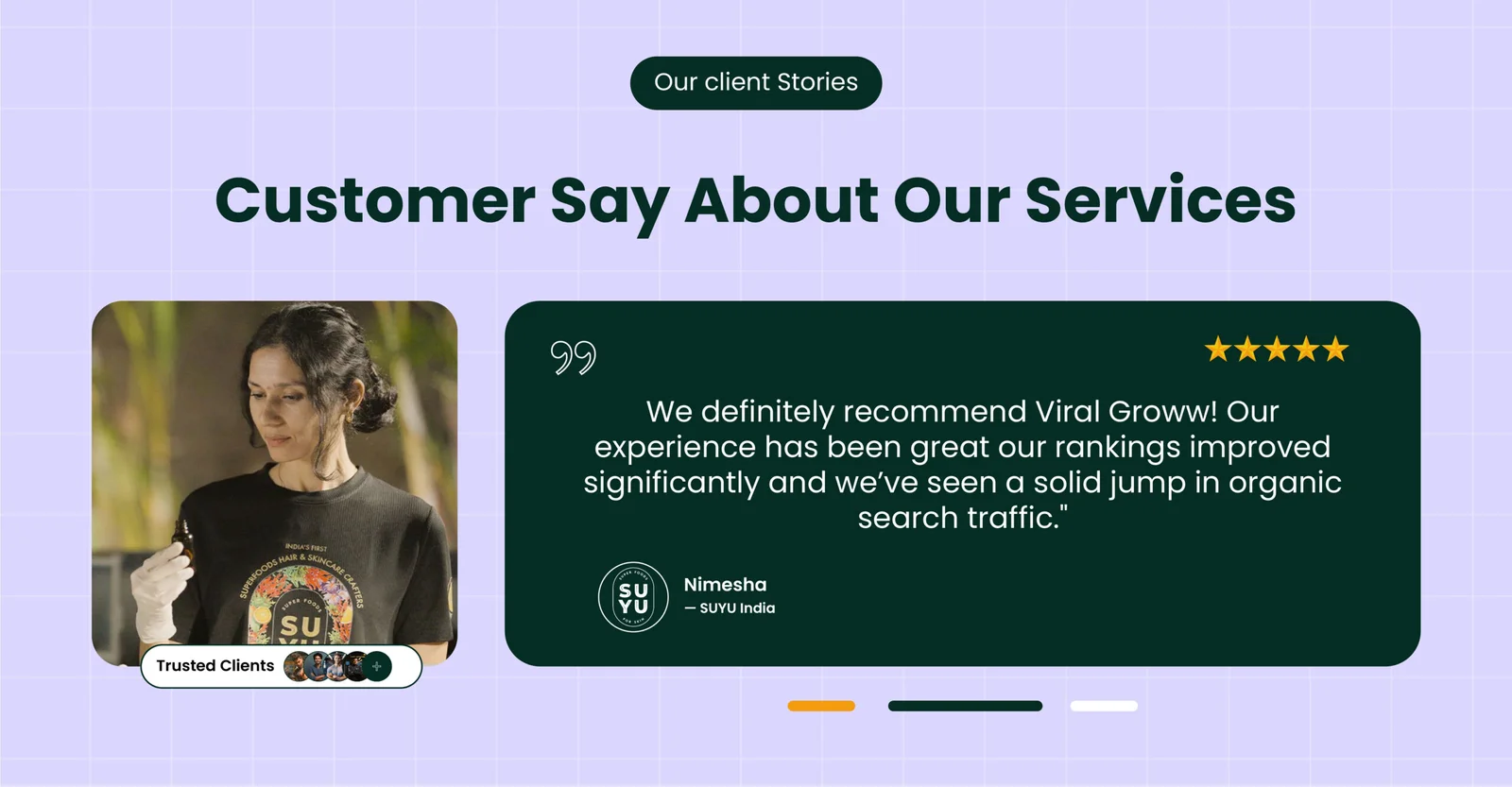
How We 2.5X’d Organic Traffic for SUYU India in Just 5 Months by Following Our White Hat SEO Framework
SUYU India was born with a clear vision—to bring superfood-powered skincare into the Indian market. Co-founded with a deep belief in sustainability.

Scaling a Sexual Wellness Brand with SEO – How We Did It for Ecstasia
Ecstasia is a sexual wellness D2C brand started by Prakhar Raj and Hamid Iqbal in December 2024. Prakhar, a school friend of mine, works in a corporate job but has always wanted to start his own business.
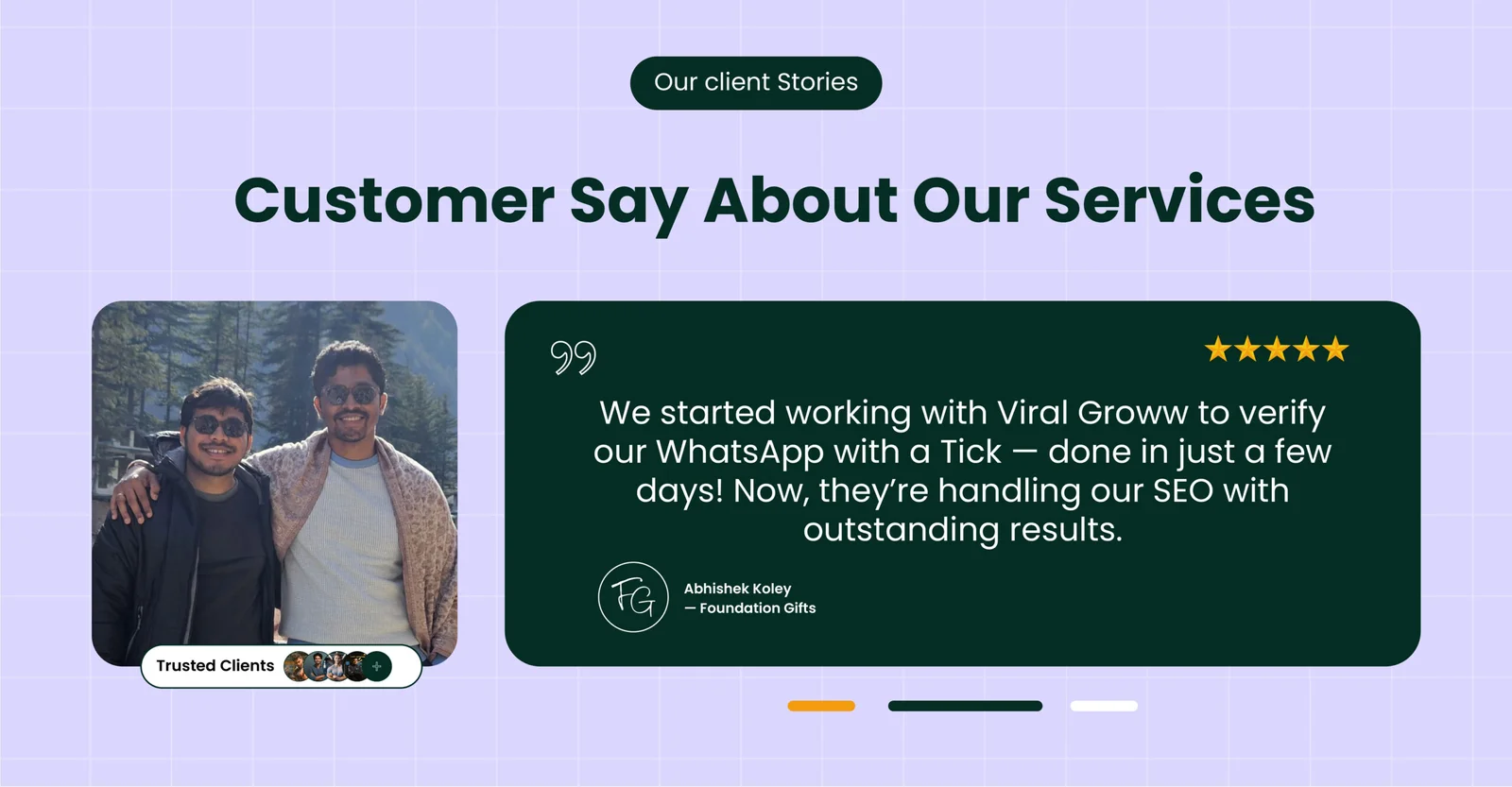
How we got 8.7X Impressions for a gifting D2C brand within 3 Months by doing White Hat SEO
Foundation Gift was started by Rakesh Adak and Abhishek Koley with a simple idea — gifts should feel just as special as the moments they celebrate.
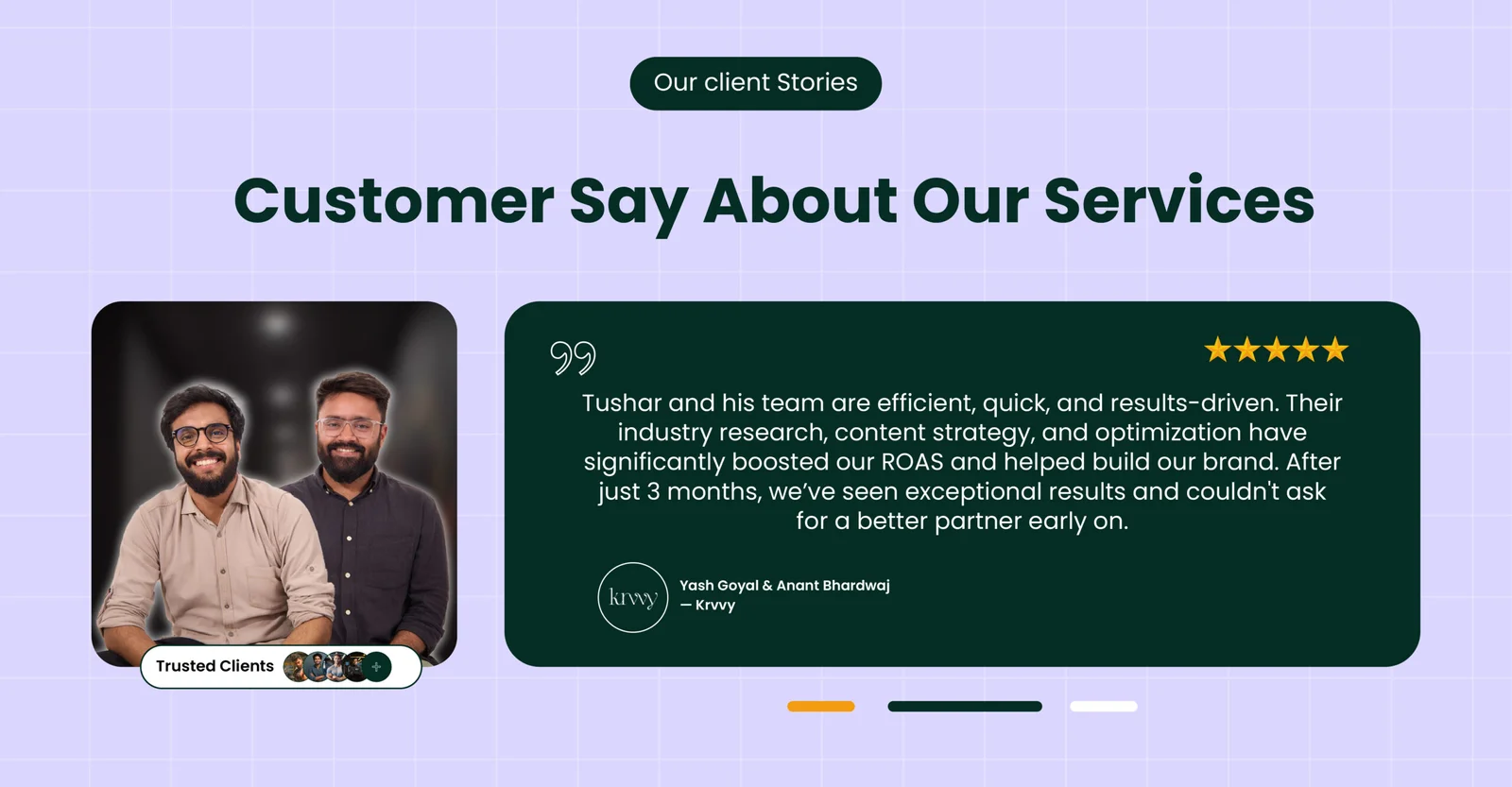
Scaling a Lingerie Brand to 7-Figure Sales in Just 75 Days—Proof Inside!
Krvvy is a modern, forward-thinking lingerie brand committed to redefining comfort and functionality. Designed to elevate the lingerie experience, Krvvy celebrates the beauty of all women, embracing and admiring every curve.
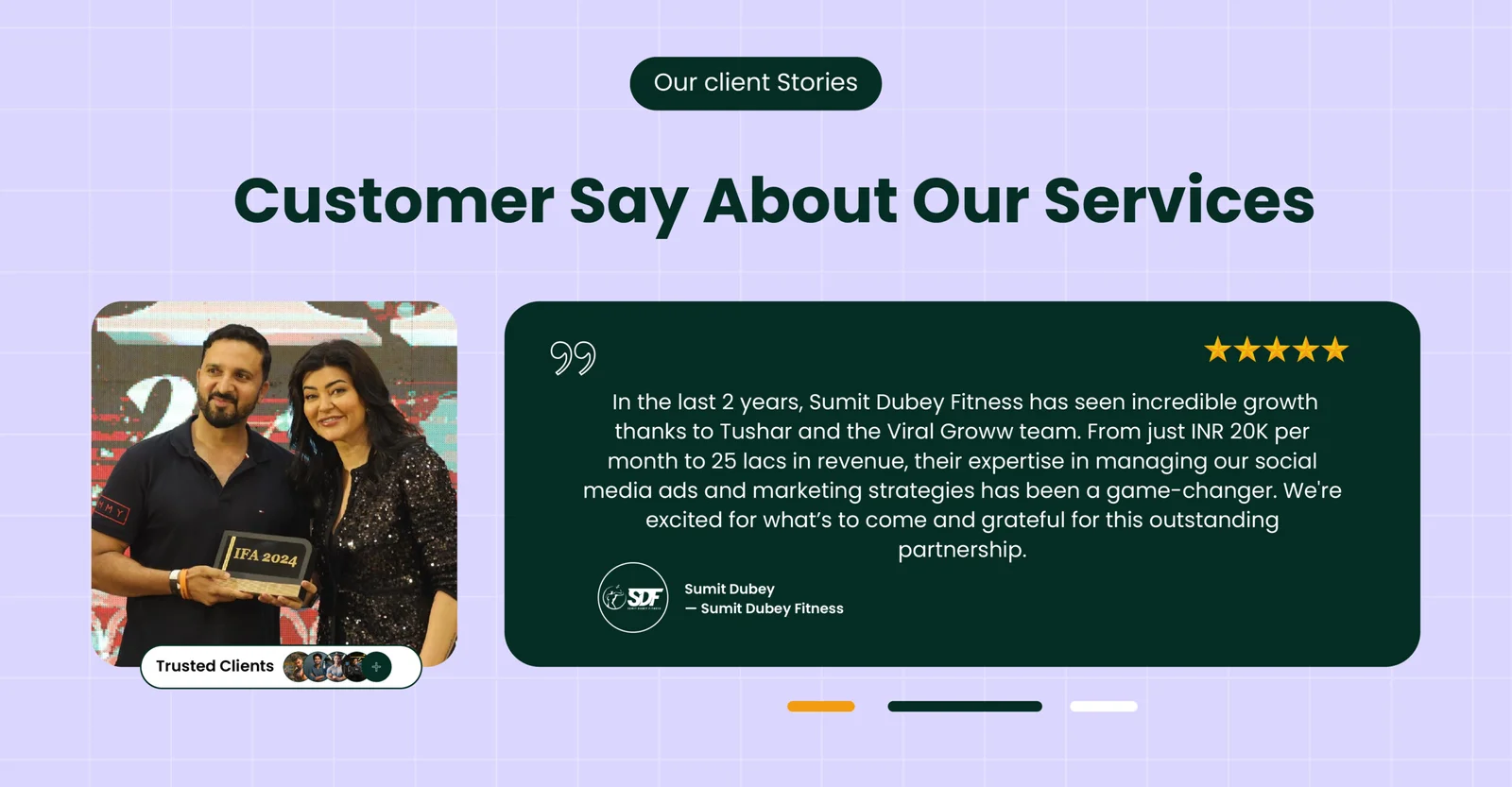
How Sumit Dubey Fitness Classes Transformed into a Fitness Empire with Strategic Digital Marketing
Sumit Dubey Fitness Classes, founded by Sumit Dubey, provides online fitness training with a personalized touch.
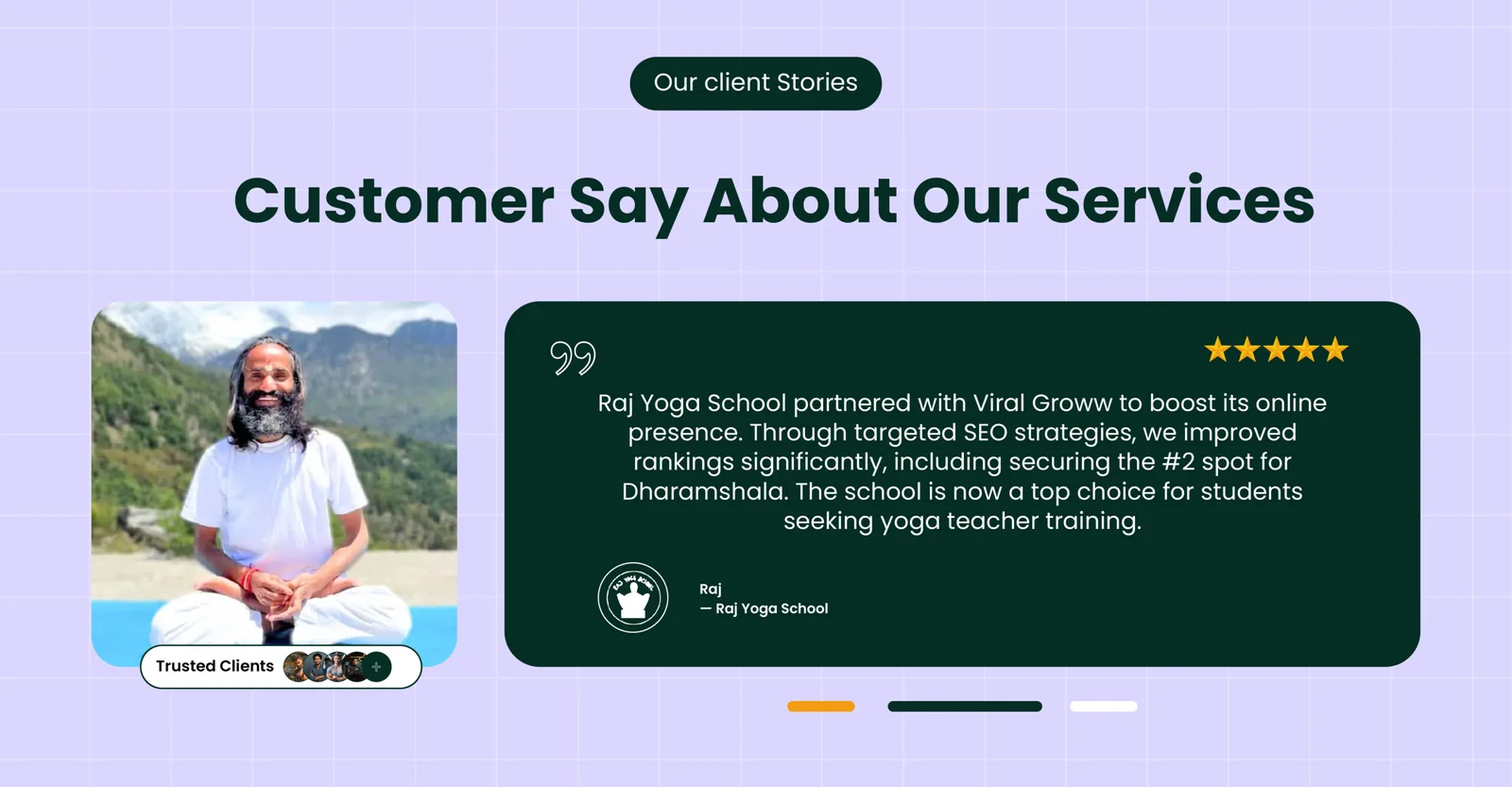
Raj Yoga School’s Journey to the Top of Search Rankings
Nestled between the tranquil peaks of the Himalayas and the sun-kissed beaches of Goa, Raj Yoga School has been a sanctuary for aspiring yoga teachers in India.
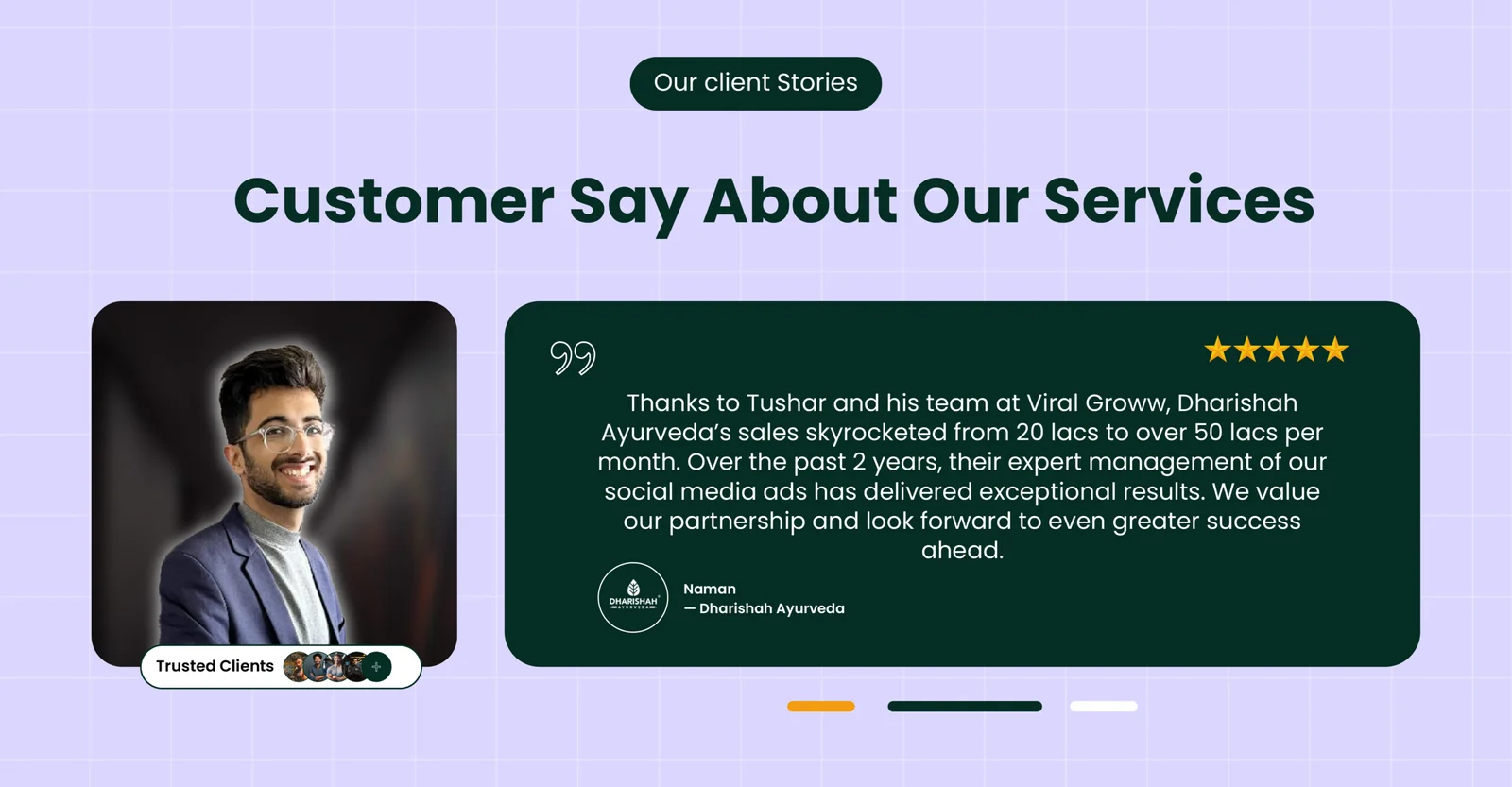
Scaling Dharishah Ayurveda from ₹20 Lakhs to ₹50 Lakhs in Monthly Sales
Dharishah Ayurveda, a promising Ayurvedic brand, had already seen growth through performance marketing, scaling from ₹2 lakhs to ₹20 lakhs in monthly sales (covered in a previous case study).

Building Trust and Revenue for Dharishah Ayurveda with Scalable Facebook Ads
Dharishah Ayurveda, led by CEO Naman Dhamija, is a premium Ayurvedic brand dedicated to promoting natural wellness.
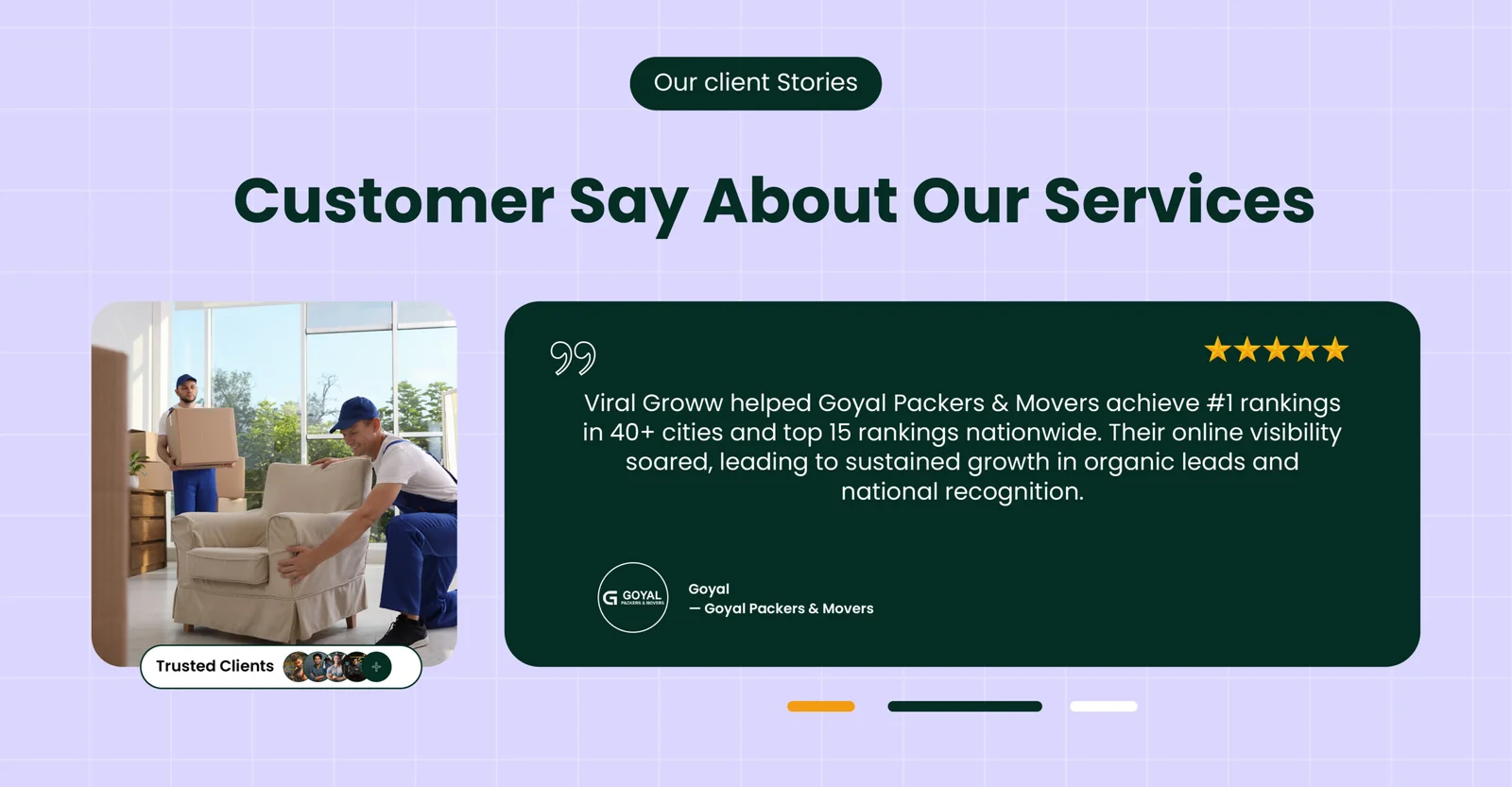
How Goyal Packers & Movers Skyrocketed to #1 in 40+ Cities with White Hat SEO
Goyal Packers and Movers India, owned by Mr. Sampat Singh, is one of the most preferred packers and movers across Northern India, offering exceptional shifting services.


